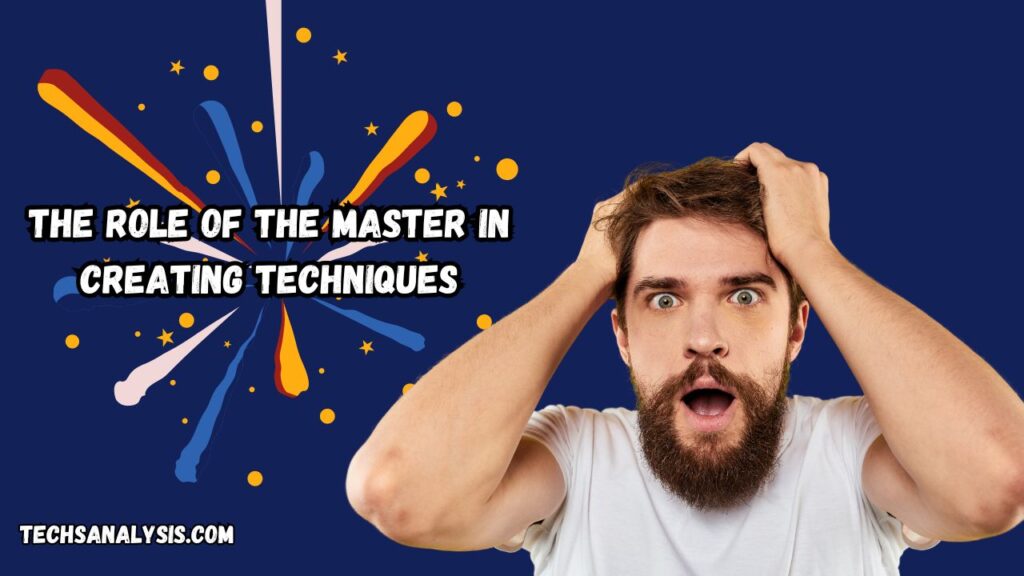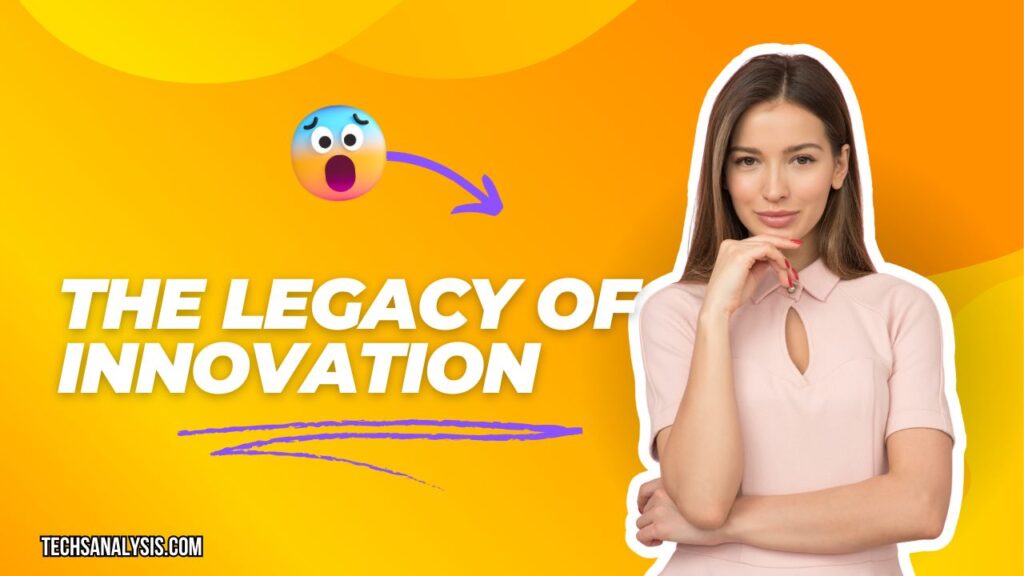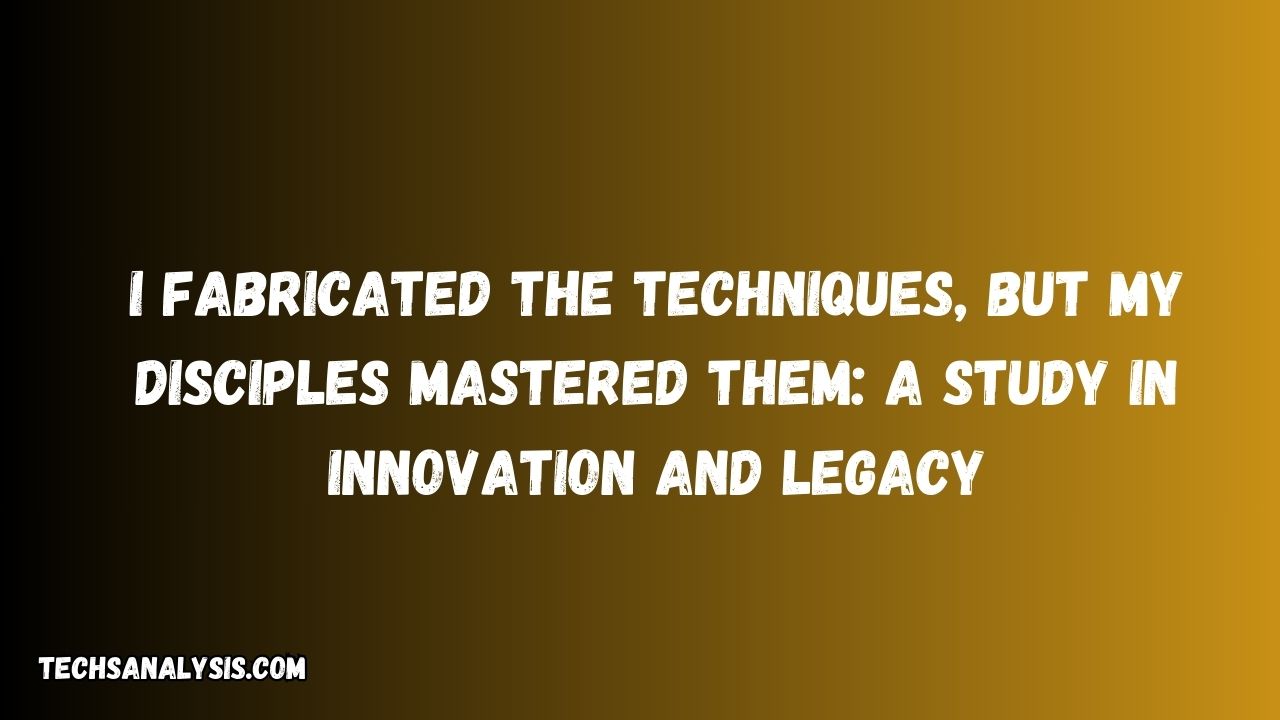Explore how innovative techniques are mastered by disciples, creating a lasting legacy of knowledge and skill. Discover the journey from creation to mastery.
Table of Contents
Introduction
In every field, from martial arts and technology to art and science, innovation often starts with a visionary master who creates new techniques. However, the true impact of these innovations is realized when disciples master and extend these techniques, sometimes surpassing their creators. This blog post delves into the journey from the creation of groundbreaking techniques to their evolution through discipleship, emphasizing the importance of mentorship, the process of skill enhancement, and the lasting legacy of innovation.
The Role of the Master in Creating Techniques

The Innovator’s Vision
At the heart of every significant advancement is a master—an individual who sees beyond conventional boundaries. This innovator is not just a creator but a pioneer who forges new paths in their field. For instance, in martial arts, figures like Bruce Lee revolutionized traditional practices with Jeet Kune Do, emphasizing efficiency and directness. His vision extended beyond existing techniques, creating a new martial art that continues to influence practitioners today.
Case Study: Steve Jobs and the Personal Computer
In technology, Steve Jobs exemplified this role. His vision for the personal computer was not merely about improving existing technology but about creating a device that was user-friendly and accessible. The introduction of the Apple Macintosh in 1984 changed the landscape of personal computing, making technology more intuitive and inspiring a generation of innovators.
Challenges Faced
Creating new techniques involves overcoming numerous challenges. These include:
- Resistance to Change: Innovators often face resistance from those who are comfortable with existing methods. The introduction of new techniques can be met with skepticism or outright opposition.
- Technical Hurdles: Developing and refining new techniques requires overcoming technical limitations. For example, creating the first practical personal computer involved solving complex hardware and software issues.
- Resource Constraints: Innovators may need substantial resources, including time, funding, and support, to bring their ideas to fruition.
The Role of Experimentation
Innovation requires extensive experimentation. Masters must test their ideas rigorously, often facing failures and setbacks along the way. This iterative process is essential for refining techniques and ensuring their effectiveness.
Overcoming Challenges in Creation

Dealing with Resistance
Resistance to change is a common challenge for innovators. For example, when the initial Macintosh was released, many traditionalists in the computing industry dismissed it as a niche product. It took time and persistence for the revolutionary aspects of the Macintosh to be recognized and adopted.
Technical and Resource Challenges
Technical challenges are inherent in the creation of new techniques. Innovators often need to develop new tools or methods to support their ideas. Resource constraints can also impact the development process. For instance, the development of early computer systems required overcoming significant hardware limitations and securing funding for research and development.
Discipleship: Learning and Innovating
The Importance of Mentorship
The Role of the Mentor
Once a technique is developed, the master’s role shifts to that of a mentor. This phase is crucial for passing on knowledge and ensuring that the techniques are understood and applied correctly. The mentor’s job is to provide guidance, share insights, and support the disciples as they learn.
Building a Strong Foundation
Effective mentorship involves building a strong foundation for disciples. This includes:
- Structured Training: Developing a structured training program that covers the fundamentals and advanced aspects of the technique.
- Feedback and Support: Providing regular feedback and support to help disciples refine their skills and overcome challenges.
- Encouraging Innovation: Encouraging disciples to explore and innovate within the framework of the technique, fostering a culture of continuous improvement.
Case Study: The Influence of J.K. Rowling on Aspiring Authors
In literature, J.K. Rowling’s mentorship extends beyond her writing. She has inspired countless aspiring authors through her storytelling techniques and commitment to her craft. Her success has led many to follow her path, applying similar methods and finding their own creative voice.
How Disciples Enhance Techniques
Learning Through Practice
Disciples enhance techniques through dedicated practice. This process involves not just mastering the basics but also experimenting with new applications and interpretations. For example, in martial arts, practitioners often develop their own variations of traditional techniques based on their personal experiences and training.
Innovation Within the Framework
As disciples become more proficient, they start to innovate within the framework provided by their master. This innovation can lead to new applications or improvements. For instance, in technology, the development of the internet and mobile applications built upon the foundational principles established by early computing pioneers.
Case Study: The Evolution of Martial Arts
In martial arts, the techniques developed by masters such as Morihei Ueshiba, the founder of Aikido, have been adapted and expanded by practitioners worldwide. Disciples have created new styles and approaches, enriching the martial art and ensuring its continued relevance.
The Evolution from Student to Master
When Disciples Surpass the Master
Achieving New Heights
A significant milestone in the journey of mastery is when disciples begin to exceed the achievements of their masters. This transition marks the success of the master’s teaching and the effectiveness of their mentorship. It is a proud moment that signifies the continuation and expansion of the master’s legacy.
Embracing the Success of Disciples
Masters should embrace the success of their disciples as a sign of their effectiveness. This attitude reflects the true spirit of mentorship—seeing one’s students excel and innovate beyond one’s own accomplishments.
Case Study: Elon Musk and the SpaceX Revolution
In the field of technology and space exploration, Elon Musk has significantly advanced the work of his predecessors. His innovations with SpaceX have pushed the boundaries of space travel and redefined industry standards, demonstrating how disciples can surpass the achievements of earlier pioneers.
Examples Across Different Fields
Technology and Innovation
In technology, disciples often take the work of early innovators and push it further. For example, the development of smartphones built upon the foundational work of computer scientists and engineers who created the first personal computers and mobile devices.
Art and Creative Expression
In the arts, disciples frequently build on the techniques of their mentors to create new styles and movements. The evolution of modern art, with movements such as Impressionism and Abstract Expressionism, showcases how artists have expanded upon traditional techniques.
Case Study: The Legacy of Picasso
Pablo Picasso’s influence on modern art is profound. His techniques and approaches have inspired countless artists to explore new forms of expression, leading to the development of various art movements and styles.
The Legacy of Innovation

The Master’s Lasting Impact
Creating a Lasting Legacy
The true legacy of a master is not just in the techniques they create but in the impact they have on their disciples and the broader field. A master’s legacy is reflected in how their work continues to inspire and influence future generations.
Ensuring the Continuation of Techniques
Masters can ensure that their techniques continue to have an impact by:
- Documenting Knowledge: Recording and publishing their methods and insights to preserve their work.
- Training Successors: Identifying and training successors who can carry forward their techniques and continue to innovate.
- Building a Community: Creating a community of practitioners who can collaborate and share advancements, keeping the techniques vibrant and relevant.
Case Study: The Legacy of Traditional Crafts
Traditional crafts, such as Japanese pottery and textile weaving, have been preserved and enhanced by skilled artisans who continue to practice and innovate within these traditions. Their efforts ensure that these techniques remain alive and influential.
H2: The Cycle of Continuous Improvement
Innovation as a Continuous Process
Innovation is a continuous process that involves ongoing improvement and adaptation. Each new generation of practitioners builds upon the work of their predecessors, ensuring that techniques evolve and remain relevant.
Fostering a Culture of Improvement
To foster continuous improvement, it is essential to:
- Encourage Experimentation: Support experimentation and exploration within the framework of existing techniques.
- Promote Collaboration: Facilitate collaboration among practitioners to share insights and advancements.
- Embrace Change: Be open to change and new ideas, recognizing that innovation often requires a willingness to adapt.
Case Study: The Evolution of Scientific Research
Scientific research is a prime example of continuous improvement. Each new discovery builds upon previous knowledge, leading to further advancements and refinements. This iterative process drives progress and expands our understanding of the world.
Conclusion
The journey from creating innovative techniques to seeing them mastered and expanded by disciples is a testament to the power of mentorship, the process of skill enhancement, and the enduring legacy of innovation. By understanding and embracing this journey, both masters and disciples can contribute to a legacy of continuous improvement and advancement.
Call to Action
Are you ready to be part of this journey of innovation and mastery? Whether you are a master looking to pass on your knowledge or a disciple eager to learn and innovate, the path to creating a lasting impact begins with your commitment. Start today, embrace the process, and contribute to a legacy of progress and excellence.

